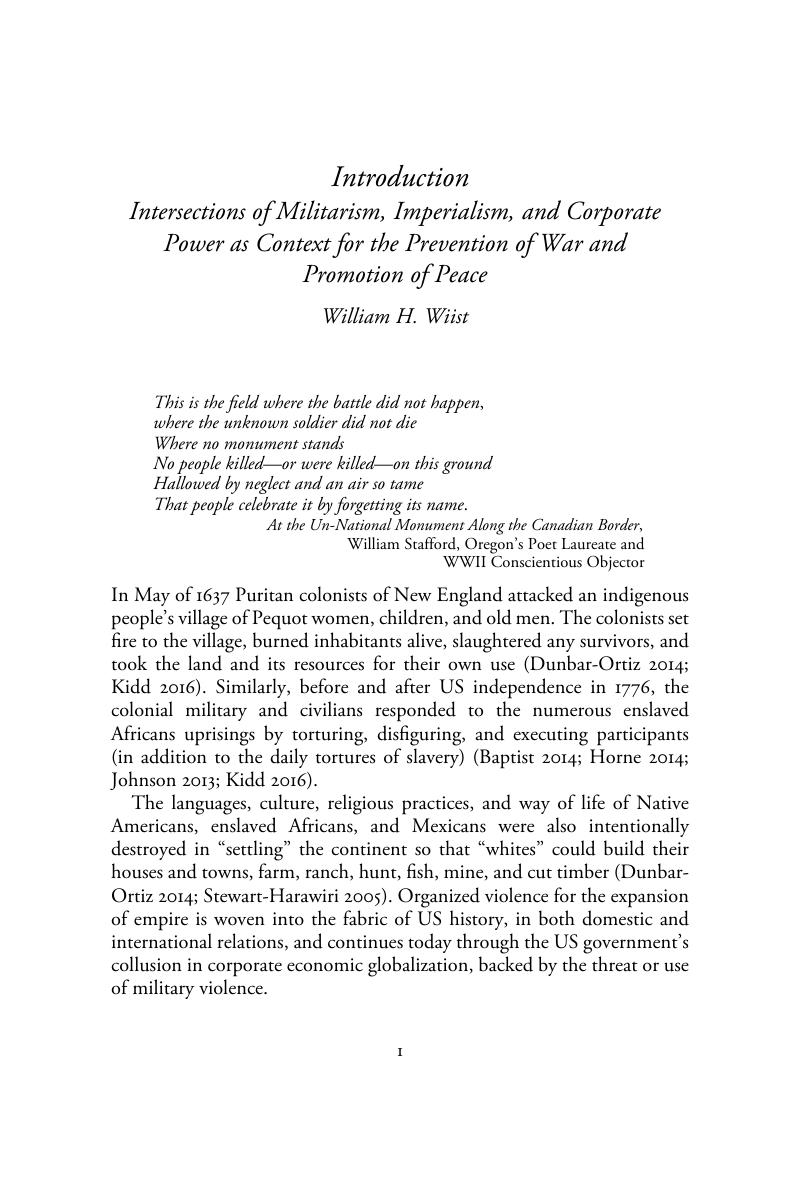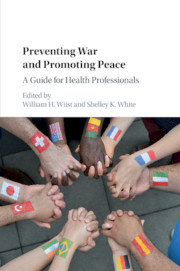Book contents
- Preventing War and Promoting Peace
- Preventing War and Promoting Peace
- Copyright page
- Dedication
- Contents
- Figures
- Tables
- Contributors
- Foreword
- Preface
- Acknowledgments
- Introduction
- Part I The Health Effects of War and Weapons of War
- Part II Social Determinants of War
- Part III Preventing War and Promoting Peace
- Part IV Teaching and Research in the Health Professions Toward the Prevention of War
- Appendices
- Index
- References
Introduction
Intersections of Militarism, Imperialism, and Corporate Power as Context for the Prevention of War and Promotion of Peace
Published online by Cambridge University Press: 28 December 2017
- Preventing War and Promoting Peace
- Preventing War and Promoting Peace
- Copyright page
- Dedication
- Contents
- Figures
- Tables
- Contributors
- Foreword
- Preface
- Acknowledgments
- Introduction
- Part I The Health Effects of War and Weapons of War
- Part II Social Determinants of War
- Part III Preventing War and Promoting Peace
- Part IV Teaching and Research in the Health Professions Toward the Prevention of War
- Appendices
- Index
- References
Summary

- Type
- Chapter
- Information
- Preventing War and Promoting PeaceA Guide for Health Professionals, pp. 1 - 16Publisher: Cambridge University PressPrint publication year: 2017



